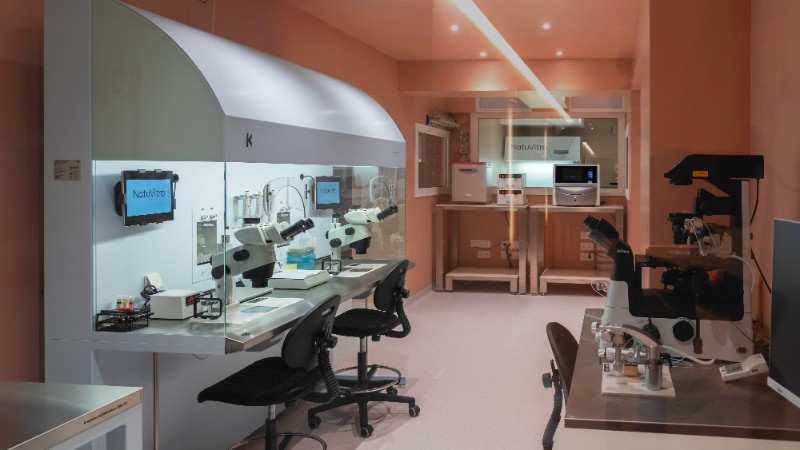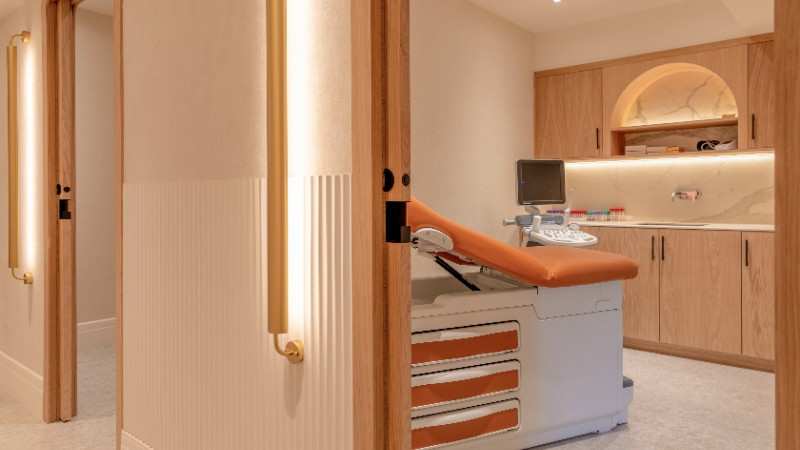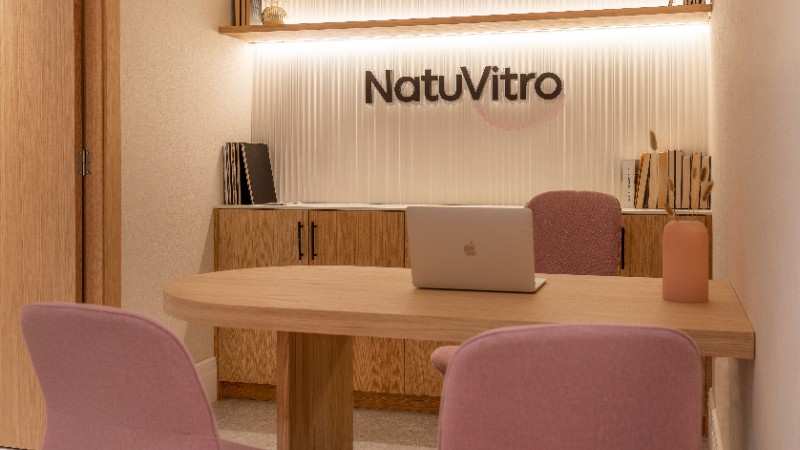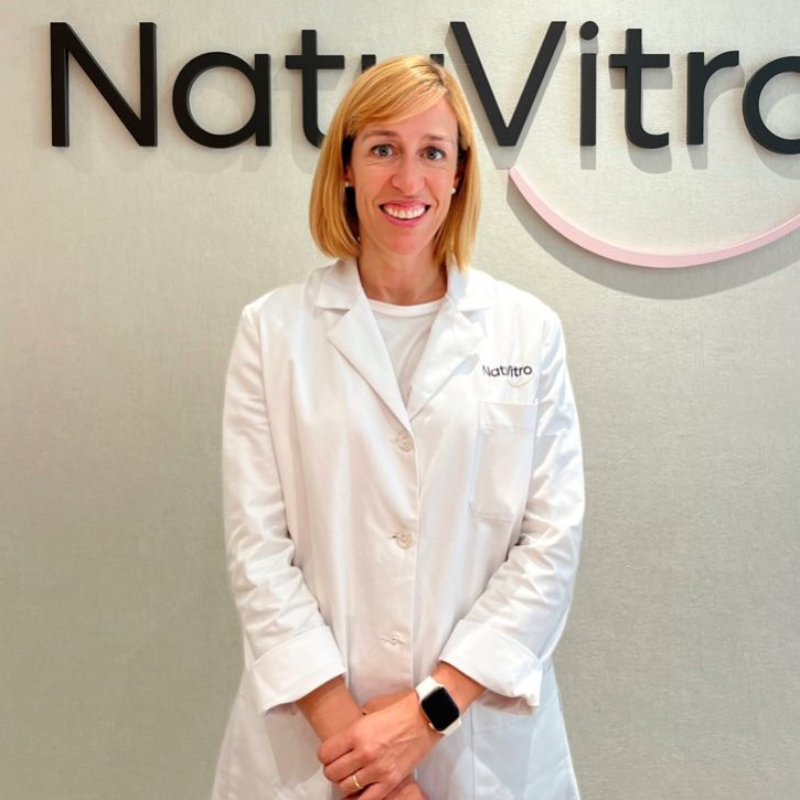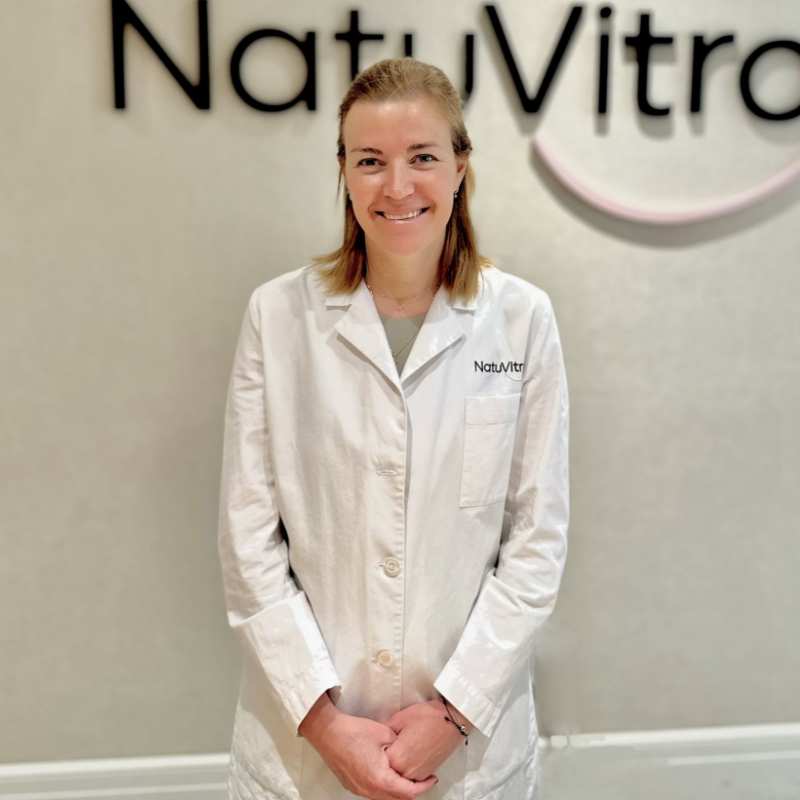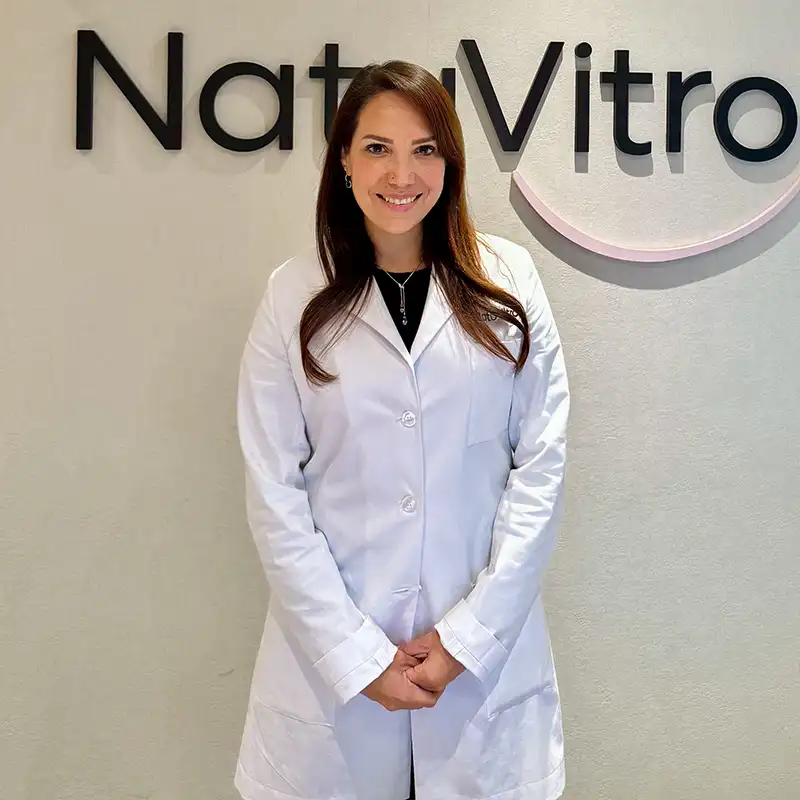
1. Introduction
In vitro fertilization (IVF) represents a beacon of hope for countless couples grappling with infertility. Central to this assisted reproductive technology is the process of embryo transfer, a delicate and critical step where an embryo is placed into the woman's uterus. The success of this procedure hinges on numerous factors, with the preparation of the endometrium—the uterine lining—being paramount. Recent focus has shifted towards optimizing this preparation, particularly through natural cycle protocols.
Endometrial preparation in a natural cycle refers to the process of readying the endometrium for embryo implantation without the extensive use of exogenous hormones, which is common in controlled ovarian hyperstimulation protocols. This approach leverages the body's natural hormonal fluctuations to create an optimal environment for the embryo. The rationale behind this method stems from the belief that a more natural, less medically intervened process might synchronize better with the body's innate rhythms, potentially increasing the likelihood of successful implantation and pregnancy.
The significance of endometrial preparation cannot be understated, as the receptivity of the endometrium is a critical determinant of implantation success. By examining the natural cycle's impact on this receptivity, this article aims to unravel the reasons behind the reported increase in success rates with this approach, offering insights into a potentially transformative practice in reproductive medicine.
2. Understanding the Natural Cycle
The natural menstrual cycle is a complex orchestration of hormonal changes governed by the body's endocrine system. It typically spans 28 days, although this can vary among individuals. The cycle is divided into several phases, each characterized by specific hormonal environments: the menstrual phase, the follicular phase, ovulation, and the luteal phase.
During the menstrual phase, the lining of the uterus, the endometrium, is shed, marking the start of a new cycle. The follicular phase follows, during which follicle-stimulating hormone (FSH) stimulates the growth of ovarian follicles. One of these follicles will mature into a dominant follicle that eventually releases an egg during ovulation, a process triggered by a surge in luteinizing hormone (LH).
Post-ovulation, the luteal phase begins. The ruptured follicle transforms into the corpus luteum, which secretes progesterone. Progesterone plays a crucial role in preparing the endometrium for potential implantation. It thickens the uterine lining, making it rich and receptive, a state termed "endometrial receptivity." Should fertilization not occur, the corpus luteum degenerates, progesterone levels fall, and a new menstrual cycle begins with the shedding of the endometrial lining.
Understanding this natural cycle is fundamental to appreciating how endometrial preparation in a natural cycle can enhance IVF outcomes. By aligning the timing of embryo transfer with the phase of natural endometrial receptivity, clinicians aim to mimic the conditions of natural conception, potentially improving the chances of successful implantation and pregnancy.
3. Endometrial Preparation: Key Concepts
Endometrial preparation is a critical step in the IVF process, involving the creation of a suitable environment within the uterus for embryo implantation. The endometrium, the inner lining of the uterus, undergoes significant changes throughout the menstrual cycle, culminating in a brief window of optimal receptivity known as the "implantation window." Achieving and recognizing this phase is vital for successful embryo transfer.
The primary objective during endometrial preparation is to achieve an appropriate thickness and structure of the endometrial lining, characteristics that are indicative of receptivity. Various protocols exist for endometrial preparation, each designed to optimize the endometrium for implantation. These include natural cycle protocols, which rely on the body's intrinsic hormonal patterns, and controlled protocols, which utilize exogenous hormones to regulate and stimulate the endometrium.
The significance of this preparation phase lies in the fact that the endometrium must be synchronously receptive at the time of embryo transfer. An inadequately prepared endometrium can hinder implantation, thereby reducing the chances of a successful pregnancy. Recent focus on natural cycle protocols stems from the hypothesis that a more physiological approach, mirroring the body's natural rhythms, may enhance endometrial receptivity, offering a more favorable setting for the embryo to implant and grow.
4. Comparing Natural and Artificial Cycles for Endometrial Preparation
In IVF, endometrial preparation can be achieved through either natural or artificial (controlled) cycles, each with its distinct methodologies and implications.
Natural Cycle Endometrial Preparation:
- Utilizes the body's own hormonal cycles to prepare the endometrium.
- Involves monitoring the natural menstrual cycle and timing embryo transfer with the natural ovulation.
- Often preferred for women who have regular menstrual cycles and exhibit normal ovulatory patterns.
- Believed to offer a more physiologically harmonious environment for the embryo due to the synchronization with the body's innate hormonal fluctuations.
- Typically involves fewer medications and interventions, potentially reducing stress and side effects for the patient.
Artificial Cycle Endometrial Preparation:
- Employs exogenous hormones, like estrogen and progesterone, to artificially prepare the endometrium.
- Provides greater control over the timing and condition of the endometrium, making it a versatile option for a broader range of patients, including those with irregular cycles or specific medical conditions.
- The controlled environment can be advantageous in synchronizing the endometrial lining with the developmental stage of the embryo.
- However, it requires more extensive medication, which can increase the physical and emotional burden on the patient.
The choice between natural and artificial cycles for endometrial preparation depends on several factors, including the patient's individual health profile, the underlying cause of infertility, and previous responses to IVF treatments. Recent research indicates a growing preference for natural cycle protocols, primarily due to their alignment with the body's natural processes and potentially lower stress impact on patients, factors that might contribute to higher success rates in embryo implantation and pregnancy.
5. Why Endometrial Preparation in a Natural Cycle is Effective
The effectiveness of endometrial preparation in a natural cycle for IVF success is attributed to several key factors:
Synchronization with Natural Hormonal Fluctuations: In a natural cycle, the endometrial lining develops in response to the body's own hormonal cues. This synchronization ensures that the endometrium is naturally receptive at the time of embryo transfer, potentially increasing the chances of implantation.
Reduced Stress and Intervention: Natural cycle preparation involves fewer medications and hormonal interventions, reducing the physical and emotional stress on the patient. Stress has been shown to negatively impact fertility; thus, minimizing it may contribute to a more favorable outcome.
Improved Endometrial Receptivity and Thickness: Studies suggest that endometrial receptivity and thickness, crucial for successful implantation, may be more effectively achieved in a natural cycle. The endometrium develops in a more physiological manner, potentially enhancing its ability to support embryo implantation.
Better Synchronization between the Embryo and Endometrium: Natural cycles ensure that the embryo is transferred at a time when the endometrium is optimally prepared, mirroring the timing of natural conception. This alignment can be crucial for the success of the implantation process.
These factors collectively contribute to the increasing popularity and success of natural cycle protocols in IVF treatments. By aligning more closely with the body's natural reproductive processes, natural cycle endometrial preparation offers a potentially more effective and patient-friendly approach to IVF.
6. Scientific Evidence Supporting Natural Cycle Endometrial Preparation
The growing preference for natural cycle endometrial preparation in IVF is supported by a body of scientific evidence:
Research Studies and Findings: Numerous studies have compared the outcomes of natural and artificial cycles in IVF. Many of these studies have reported higher implantation and pregnancy rates in natural cycles. Researchers attribute this to the better physiological environment for embryo implantation provided by the natural cycle.
Statistical Data on Success Rates: Data from these studies often show a significant increase in the success rates of embryo transfers in natural cycles compared to controlled cycles. For instance, some studies have reported improvements in clinical pregnancy rates and live birth rates when using natural cycle protocols.
Analysis of Endometrial Quality: Research has also focused on the quality of the endometrial lining in natural cycles. These studies suggest that the endometrium in a natural cycle may be more conducive to successful implantation due to its structure and thickness, which are optimally developed under natural hormonal influence.
Patient-Specific Outcomes: Some studies have also highlighted the benefits of natural cycle preparation for specific patient groups, such as those with a history of poor response to exogenous hormones or those who prefer a less medicated approach.
The scientific evidence underscores the effectiveness of natural cycle endometrial preparation, providing a strong basis for its increasing use in clinical practice. By offering a more synchronized and less invasive approach, this method aligns closely with the natural reproductive process, potentially enhancing the chances of successful pregnancy in IVF treatments.
7. Patient Selection and Considerations
Selecting the right patients for natural cycle endometrial preparation is crucial for maximizing its benefits in IVF treatments:
Criteria for Selecting Patients: Ideal candidates for natural cycle protocols are women with regular menstrual cycles and normal ovulatory patterns. This ensures that their natural hormonal fluctuations are predictable and conducive to synchronizing with the embryo transfer. Additionally, women who have had adverse reactions to fertility drugs in the past or who prefer a less medicated approach may also be suitable candidates.
Considerations for Specific Patient Groups: Age is a significant factor; younger women with good ovarian reserve typically respond better to natural cycles. Patients with a history of endometriosis or polycystic ovary syndrome (PCOS) may require individualized assessment, as their hormonal imbalances might affect the natural cycle's effectiveness. Also, women with a history of recurrent implantation failure in controlled cycles may benefit from switching to a natural cycle approach.
Assessment of Endometrial Response: Before opting for a natural cycle, it is important to assess the patient's endometrial response to natural hormonal changes. This includes monitoring endometrial thickness and pattern through ultrasound examinations during a few menstrual cycles.
Patient Preference and Comfort: The choice between natural and artificial cycles should also consider the patient's personal preferences and comfort levels. Some patients may prefer natural cycles due to fewer side effects and a more holistic approach to treatment.
By carefully selecting patients and considering individual health profiles, reproductive specialists can optimize the use of natural cycle endometrial preparation to enhance the success rates of IVF treatments.
8. Challenges and Limitations
While natural cycle endometrial preparation offers several advantages, it also comes with its own set of challenges and limitations:
Timing and Monitoring Challenges: One of the main challenges in natural cycle IVF is the precise timing required for embryo transfer. Since this protocol relies on the body’s natural ovulation, close monitoring through blood tests and ultrasound is essential to identify the optimal window for transfer. This can sometimes be logistically challenging and requires the patient's availability for frequent monitoring.
Limitations for Certain Patient Profiles: Natural cycles may not be suitable for all patients. Women with irregular menstrual cycles, those with diminished ovarian reserve, or older women may have less predictable ovulatory patterns, making it difficult to time the embryo transfer accurately. In such cases, controlled cycles with hormonal stimulation might offer a better chance of success.
Variable Success Rates: While some studies show promising results, the success rates of natural cycles can vary widely depending on individual patient factors. This variability can be a limitation for those seeking a more guaranteed outcome.
Risk of Cycle Cancellation: There is a higher risk of cycle cancellation in natural IVF cycles due to unforeseen issues like premature ovulation or failure to retrieve oocytes during the natural cycle.
Despite these challenges, for many patients, the benefits of a natural cycle, such as reduced medication use and a potentially more receptive endometrial environment, outweigh the limitations. It is important for clinicians and patients to discuss these factors thoroughly to make an informed decision about the best approach for their IVF treatment.
9. Conclusion
The exploration of endometrial preparation in natural cycles for IVF highlights a significant shift towards more individualized and potentially less invasive fertility treatments. This approach, which aligns closely with the body's natural reproductive processes, has shown promising results in increasing the success rate of embryo transfers. Key takeaways from this discussion include:
Natural Cycle's Alignment with Physiological Processes: The natural cycle method respects and utilizes the body's innate hormonal rhythms, potentially leading to better endometrial receptivity and a more conducive environment for embryo implantation.
Patient-Centric Approach: This method offers a less medicated, more patient-friendly approach to IVF. It is particularly advantageous for women who prefer a more natural course of treatment or who have had adverse reactions to fertility drugs.
Emerging Scientific Support: While research continues to evolve, current evidence suggests that natural cycle protocols can be as effective, if not more so, in certain patient populations, compared to traditional controlled cycles.
Future Perspectives: As reproductive medicine continues to advance, the role of natural cycle endometrial preparation is likely to become more defined, with further research clarifying its effectiveness across different patient profiles.
In the ever-evolving landscape of reproductive medicine, NatuVitro stands at the forefront as a leading expert in natural cycle endometrial preparation for IVF. Our commitment to this method has not only pioneered advancements in fertility treatment but also transformed the lives of countless families. At NatuVitro, we've witnessed firsthand the remarkable impact this approach has on increasing success rates - an improvement that surpasses expectations. Our experienced team, equipped with cutting-edge techniques and a deep understanding of natural cycle protocols, is dedicated to providing personalized care tailored to each couple's unique journey towards parenthood. If you're seeking more information or considering this method for your fertility journey, we invite you to connect with us. Contact NatuVitro today, and take the first step towards realizing your dream of starting or growing your family with a method that harmonizes with nature's own rhythms for a more natural path to pregnancy.
Our experts are ready to examine your case history, clarify your choices, and address every question you have.
Don't wait to make informed decisions – your personalized guidance awaits!
- Spain (España)+34
- France (La France)+33
- Italy (Italia)+39
- United Kingdom+44
- United States+1
- Belgium (België)+32
- Switzerland (Schweiz/Suisse)+41
- Germany (Deutschland)+49
- Netherlands (Nederland)+31
- Afghanistan (افغانستان)+93
- Albania (Shqipëri)+355
- Algeria (الجزائر)+213
- American Samoa+1
- Andorra+376
- Angola+244
- Anguilla+1
- Antigua and Barbuda+1
- Argentina+54
- Armenia (Հայաստան)+374
- Aruba+297
- Ascension Island+247
- Australia+61
- Austria (Österreich)+43
- Azerbaijan (Azərbaycan)+994
- Bahamas+1
- Bahrain (البحرين)+973
- Bangladesh (বাংলাদেশ)+880
- Barbados+1
- Belarus (Беларусь)+375
- Belize+501
- Benin (Bénin)+229
- Bermuda+1
- Bhutan (འབྲུག)+975
- Bolivia+591
- Bosnia and Herzegovina (Босна и Херцеговина)+387
- Botswana+267
- Brazil (Brasil)+55
- British Indian Ocean Territory+246
- British Virgin Islands+1
- Brunei+673
- Bulgaria (България)+359
- Burkina Faso+226
- Burundi (Uburundi)+257
- Cambodia (កម្ពុជា)+855
- Cameroon (Cameroun)+237
- Canada+1
- Cape Verde (Kabu Verdi)+238
- Caribbean Netherlands+599
- Cayman Islands+1
- Central African Republic (République centrafricaine)+236
- Chad (Tchad)+235
- Chile+56
- China (中国)+86
- Christmas Island+61
- Cocos (Keeling) Islands+61
- Colombia+57
- Comoros (جزر القمر)+269
- Congo (DRC) (Jamhuri ya Kidemokrasia ya Kongo)+243
- Congo (Republic) (Congo-Brazzaville)+242
- Cook Islands+682
- Costa Rica+506
- Côte d’Ivoire+225
- Croatia (Hrvatska)+385
- Cuba+53
- Curaçao+599
- Cyprus (Κύπρος)+357
- Czech Republic (Česká republika)+420
- Denmark (Danmark)+45
- Djibouti+253
- Dominica+1
- Dominican Republic (República Dominicana)+1
- Ecuador+593
- Egypt (مصر)+20
- El Salvador+503
- Equatorial Guinea (Guinea Ecuatorial)+240
- Eritrea+291
- Estonia (Eesti)+372
- Eswatini+268
- Ethiopia+251
- Falkland Islands (Islas Malvinas)+500
- Faroe Islands (Føroyar)+298
- Fiji+679
- Finland (Suomi)+358
- French Guiana (Guyane française)+594
- French Polynesia (Polynésie française)+689
- Gabon+241
- Gambia+220
- Georgia (საქართველო)+995
- Ghana (Gaana)+233
- Gibraltar+350
- Greece (Ελλάδα)+30
- Greenland (Kalaallit Nunaat)+299
- Grenada+1
- Guadeloupe+590
- Guam+1
- Guatemala+502
- Guernsey+44
- Guinea (Guinée)+224
- Guinea-Bissau (Guiné Bissau)+245
- Guyana+592
- Haiti+509
- Honduras+504
- Hong Kong (香港)+852
- Hungary (Magyarország)+36
- Iceland (Ísland)+354
- India (भारत)+91
- Indonesia+62
- Iran (ایران)+98
- Iraq (العراق)+964
- Ireland+353
- Isle of Man+44
- Israel (ישראל)+972
- Italy (Italia)+39
- Jamaica+1
- Japan (日本)+81
- Jersey+44
- Jordan (الأردن)+962
- Kazakhstan (Казахстан)+7
- Kenya+254
- Kiribati+686
- Kosovo+383
- Kuwait (الكويت)+965
- Kyrgyzstan (Кыргызстан)+996
- Laos (ລາວ)+856
- Latvia (Latvija)+371
- Lebanon (لبنان)+961
- Lesotho+266
- Liberia+231
- Libya (ليبيا)+218
- Liechtenstein+423
- Lithuania (Lietuva)+370
- Luxembourg+352
- Macau (澳門)+853
- North Macedonia (Македонија)+389
- Madagascar (Madagasikara)+261
- Malawi+265
- Malaysia+60
- Maldives+960
- Mali+223
- Malta+356
- Marshall Islands+692
- Martinique+596
- Mauritania (موريتانيا)+222
- Mauritius (Moris)+230
- Mayotte+262
- Mexico (México)+52
- Micronesia+691
- Moldova (Republica Moldova)+373
- Monaco+377
- Mongolia (Монгол)+976
- Montenegro (Crna Gora)+382
- Montserrat+1
- Morocco (المغرب)+212
- Mozambique (Moçambique)+258
- Myanmar (Burma) (မြန်မာ)+95
- Namibia (Namibië)+264
- Nauru+674
- Nepal (नेपाल)+977
- New Caledonia (Nouvelle-Calédonie)+687
- New Zealand+64
- Nicaragua+505
- Niger (Nijar)+227
- Nigeria+234
- Niue+683
- Norfolk Island+672
- North Korea (조선 민주주의 인민 공화국)+850
- Northern Mariana Islands+1
- Norway (Norge)+47
- Oman (عُمان)+968
- Pakistan (پاکستان)+92
- Palau+680
- Palestine (فلسطين)+970
- Panama (Panamá)+507
- Papua New Guinea+675
- Paraguay+595
- Peru (Perú)+51
- Philippines+63
- Poland (Polska)+48
- Portugal+351
- Puerto Rico+1
- Qatar (قطر)+974
- Réunion (La Réunion)+262
- Romania (România)+40
- Russia (Россия)+7
- Rwanda+250
- Saint Barthélemy+590
- Saint Helena+290
- Saint Kitts and Nevis+1
- Saint Lucia+1
- Saint Martin (Saint-Martin (partie française))+590
- Saint Pierre and Miquelon (Saint-Pierre-et-Miquelon)+508
- Saint Vincent and the Grenadines+1
- Samoa+685
- San Marino+378
- São Tomé and Príncipe (São Tomé e Príncipe)+239
- Saudi Arabia (المملكة العربية السعودية)+966
- Senegal (Sénégal)+221
- Serbia (Србија)+381
- Seychelles+248
- Sierra Leone+232
- Singapore+65
- Sint Maarten+1
- Slovakia (Slovensko)+421
- Slovenia (Slovenija)+386
- Solomon Islands+677
- Somalia (Soomaaliya)+252
- South Africa+27
- South Korea (대한민국)+82
- South Sudan (جنوب السودان)+211
- Spain (España)+34
- Sri Lanka (ශ්රී ලංකාව)+94
- Sudan (السودان)+249
- Suriname+597
- Svalbard and Jan Mayen+47
- Sweden (Sverige)+46
- Syria (سوريا)+963
- Taiwan (台灣)+886
- Tajikistan+992
- Tanzania+255
- Thailand (ไทย)+66
- Timor-Leste+670
- Togo+228
- Tokelau+690
- Tonga+676
- Trinidad and Tobago+1
- Tunisia (تونس)+216
- Turkey (Türkiye)+90
- Turkmenistan+993
- Turks and Caicos Islands+1
- Tuvalu+688
- U.S. Virgin Islands+1
- Uganda+256
- Ukraine (Україна)+380
- United Arab Emirates (الإمارات العربية المتحدة)+971
- Uruguay+598
- Uzbekistan (Oʻzbekiston)+998
- Vanuatu+678
- Vatican City (Città del Vaticano)+39
- Venezuela+58
- Vietnam (Việt Nam)+84
- Wallis and Futuna (Wallis-et-Futuna)+681
- Western Sahara (الصحراء الغربية)+212
- Yemen (اليمن)+967
- Zambia+260
- Zimbabwe+263
- Åland Islands+358
Visit our clinic
Location
Call us now
Leave a message

